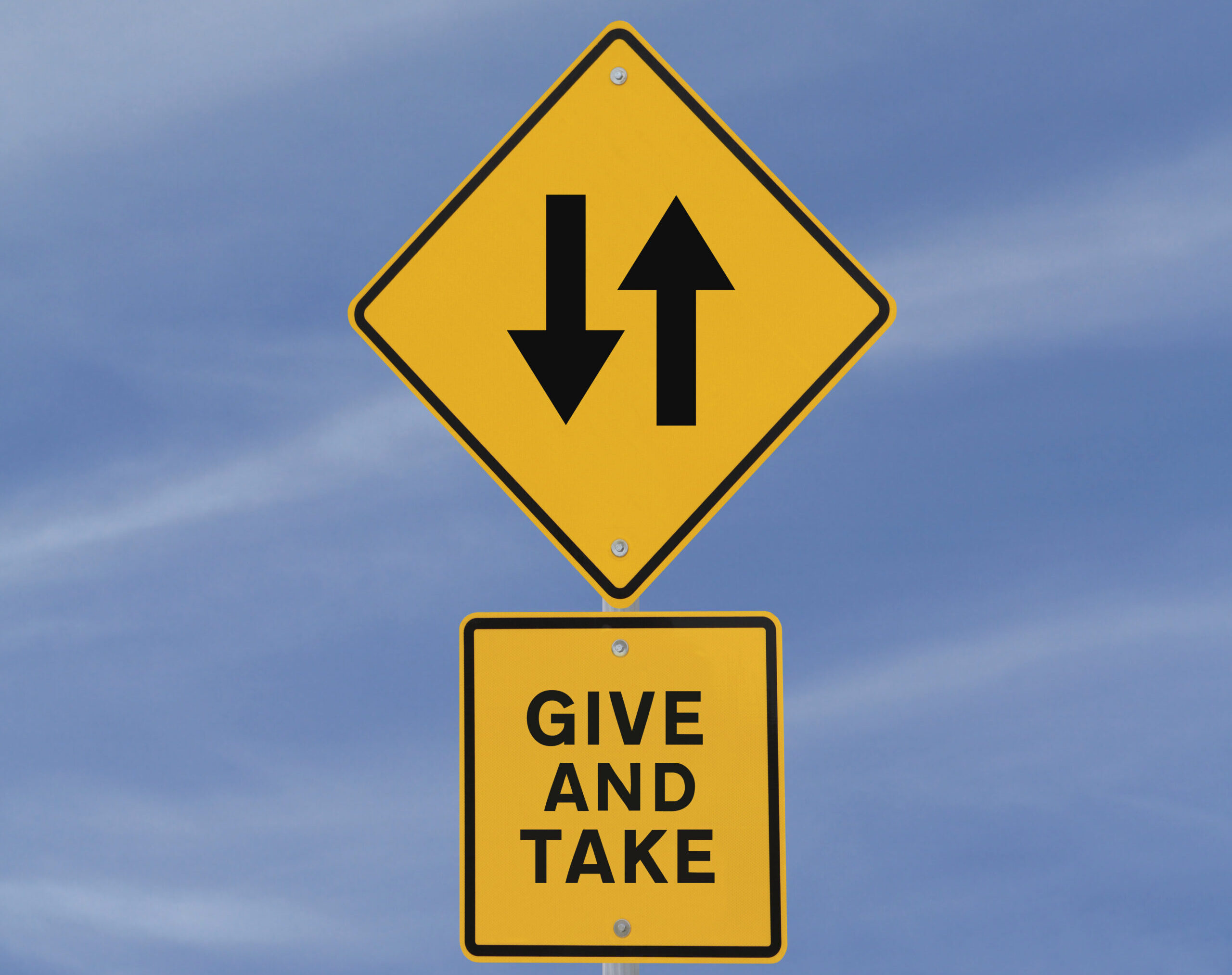In his book, Give and Take: Why Helping Others Drives our Success, Wharton psychologist, Adam Grant, describes three types of social interaction styles in the workplace: givers, takers and matchers.
Givers are focused on others and what they need from them. They don’t worry getting credit. They genuinely want to help others succeed. Givers help others without expecting anything in return.
As you would imagine, takers are focused on self. They want to get more than they give. Getting credit for what they do is important. Their own interests come first. Most takers aren’t cutthroat. It’s more about self-preservation, believing if they don’t take care of themselves first, no one else will.
Matchers believe in fairness and reciprocity. If they help others, they expect something in return. If you turn down a matcher when asked for help, don’t expect them to help you when asked.
These social interactions styles are fluid. You don’t always operate with one style. In fact, Grant contends that most of us our givers in our personal lives with friends and family. We’ll give without expecting anything in return. However, in the workplace the majority of people are matchers.
Are you a giver, a taker or a matcher?
Grant found that the across occupations, givers fall to the bottom of the corporate ladder. They make less money, get less of their own work done and are judged by others to be less powerful and dominant. Sacrificing one’s own self-interest can have a cost.
Surprisingly, givers are also disproportionately represented among top performers in the workplace. For example, Grant found that successful salespeople had much higher scores on their desire to help others. These givers produced 50% more annual income for their businesses than takers or matchers.
When givers succeed, their colleagues are more likely to be happy for them. They’re cheering them on. It’s hard to cheer on a taker, but when a giver succeeds we often say it couldn’t happen to a nicer person.
So what’s the difference between givers at the bottom and those at the top? Self-differentiation.
Well, Grant doesn’t put it that way, but that’s my take. Self-differentiation is the ability to define one’s own goals and values in the midst of surrounding togetherness pressures. It’s the ability to stand up for you believe and what you need?
Here are four differences between successful and unsuccessful givers.
The ability to be appropriately assertive.
Successful givers are not timid. They are able to be assertive when necessary. Unsuccessful givers are door mats. If you can’t stand up for yourself, it’s likely that takers will exploit you. Sometimes you need to advocate for yourself. If you can do this in a non-anxious way, giving others the freedom to disagree, you will not be perceived as a taker. People will understand you to be a giver who knows who you are.
The ability to set boundaries.
Givers have a hard time saying no. If you are giver, this not only means that you have no time for your most important work, but it also leaves you prone to burnout and unnecessary stress. It’s OK to say no to requests from others. You don’t even have to give a reason. You can just say, “I’m sorry, I’m not able to do that.” If you are respectful, non-anxious and polite, the other will understand that they have to live with it.
What’s interesting is that givers have more latitude to say no, because they also say yes more often than takers and matchers. Because they have developed a reputation for being helpful, people give them more grace when they say no.
The willingness to ask for help.
It’s funny because most givers will gladly help others, but have a hard time asking for help themselves. It feels like a sign of weakness. Successful givers know this is false. They know they can’t do it alone and are willing to ask others for help when they need it.
If you are a giver, be realistic with yourself. Figure out where you are falling short and how others can help you. Then pray for the courage to ask. Self-differentiation isn’t always about taking an assertive stand. It’s sometimes means having the courage to ask for what you need.
The ability to keep empathy in check.
Research by Daniel Batson makes it clear that people who feel empathy are willing to put the needs of others before their own. This is not a bad thing, but it puts them at greater risk of exploitation by takers.
Grant says that if you are a giver, then you can move from being an empathizer to being a perspective taker. The former feels others’ pain. The latter thinks about what the other needs, what will serve them well and what is in their best interests.
Successful givers use perspective taking to see where interests align and how they might best help. Rather than succumbing to their feelings of empathy for the other’s predicament, they limit their help to where their own gifts and interests best align with the other’s. This helps to keep what they do more manageable and valuable.
Are you a giver? Take heart. Self-differentiation will enable you to use this gift to be a more effective leader.
If not, think about how you can become the kind of giver who makes a difference for others, your mission and yourself.


